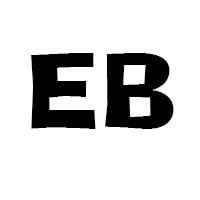“One’s identity is shaped by how they confront and utilize their experiences.”
Esther Boesche’s artistic journey is deeply rooted in the appreciation of nature and the exploration of identity and the human experience. Born in 1980 in Northern Germany, Esther grew up as the youngest of three children in a seemingly traditional family, with a stay-at-home mother and a father who owned a cross border car business. The artists childhood was filled with stargazing, camping, exploring materials in her fathers workshop, and building fortresses in the forest –all of which fueled the artist’s early artistic endeavors. Esther developed a keen interest in using tools and materials, creating sublime and interactive artworks both in and around the home and in local public spaces. This early exposure instilled in her a fearless approach to creativity, allowing her to push boundaries and explore her artistic projects in various media with extraordinary skill and confidence.
From a young age, the artist was drawn to drawing, installation, public intervention/ interactivity, and photography. Art became her primary means of engaging with the world, helping her process and understand both external and internal realities, including cultural and human systems that eluded her as a child. Much of her work is heavily influenced and inspired by themes of self-expression, women’s rights, spirituality, and nature.
Early works focused on subjects in the realm of family, coming of age, social norms and cultural structures, often acting as coping mechanisms, tools to examine and understand as well as protest and draw awareness to social structures and cultural proclivities that are not human friendly, through her art. As her practice evolved, the artistic work expanded to include a broader examination of the essence of human nature, contemporary relationships, cultural norms, and societal systems. Esther’s work critically examines cultural norms and expectations for female roles and societal expectations and boundaries with empathy, offering hope and encouraging to take on alternative routes and perspectives.
After earning a BA in Communication and Photography from the Muthesius School of Arts in Northern Germany, Esther moved to New York City to pursue an MFA in Advanced Photographic Studies at ICP Bard College. This relocation had a profound impact on her practice, and challenging her to work and build herself a place within a culture very different from her own, without feeling out of place or judgmental. The artist had to come to terms with her European roots and experience of being an immigrant artist in New York. How do you stay connected to yourself in a puzzling concrete jungle melting pot New York City when your main inspiration is drawn from a European culture, ocean side upbringing, nature, spirituality and a predilection for stargazing and silence?
Breaking Glass (2016) marked Esther’s first major project in New York, focusing on reconciling her cultural upbringing and coming to peace with a homesickness for European culture but also breaking free from inherited cultural constraints. Subsequent works, are influenced by her experiences in the U.S. Like Loyal Employee, a critique of New York’s hustle culture and the dehumanization of —— “the workforce”. For this sculptural piece, the artist used popularized derogatory and abusive language prompts from online job advertisements, transcribing them in red and black ink onto sculptural T-shirt bodies hat can be switched on and off like lamps, made from dollar store clothes typically worn by low-income female employees.
Another project, Moon Bodies/ The Coldest Water (2024) talks about emotionality, isolation and relationships. Bodies are collaged and interact with each other within a Utopia environment. A hint on isolation and the quality of relationships and female mental, emotional health, perhaps. The women in Moon Bodies’ utopia landscape appear very sensual siren like, yet are shown in displays of despair, injured, melting, drowning, dreaming and hoping. The women are trapped in their adapted roles within the utopia environment and respond with hopelessness and emotionality. One wants to tell them that there is another landscape behind the tapestry of the icy grey mountain lake deserted utopia that reminds much of the Truman show and motivate them to get out and rethink their roles and dilemma.
Everything has to sleep sheds light on the ultimate law of our existence. Everything and everyone has to sleep literally, humans, animals, plants, birds and insects. We usually accept this as a given that we won’t look at and try not to think about our own death and the fact that everything goes to cycles and that everything has a time stamp: Nothing material that we build and create or that is born through natural biological processes will be here forever. Everything has to sleep reminds of the miraculousness of our existence and the laws of earth and asks to not take our time, health, experience and relationships for granted.
I Am You (published in 2024), is a very pristine project the artist worked on for more than five years due to tremendous technical production challenges; such as how double exposure affects the quality and lighting of a photograph, (which is why most double exposures are still done in black and white), and also keeping consistency in distance and focus, as well as ‘bringing herself’ into different emotional / acting positions to be able to portrait and photograph a variety of emotional states. The work traverses human growth, transformation, and identity, questioning the fleetingness of our emotions and how much of who we are is shaped by upbringing, environment, social trends, and personal choices. It addresses themes of emotional disorders, changing mental states, the humanness of our changing moods and emotions and the mysteriousness behind the conditioning into and the willful creation of our own personality types, questioning how our mental and emotional states and our environment might form and influence our physical appearance, health, and individual experience and expression. But ultimately asking who we really are underneath our self crated avatars, social roles and fleeting opinions and emotions.
Otherworld is here already is inspired by advancements in AI and robotics, exploring themes of alien life, intelligent defense weapons, personal robots, and explorations in the merging of humans with machines. A monster size dragonfly-lookalike drone sighting during a leisure visit at Rockaway Beach sparked reflections on surveillance and the encroaching dystopian future. Where did this drone come from? Why was it there? Was it a private drone or a police drone. Was it a surveillance adoption test? It became clear to the artist that this wasn’t just a start but that sci-fi living and sci fi led war zones is already here. We just haven’t noticed it yet. The artist’s work critiques the increasing professionalization and AI-driven control in daily life, addressing issues of isolation, social media addiction, and the rising sense of replaceability. Her art serves as a stark reminder that much of the envisioned utopia and feared dark future is already present, urging us to reflect on our current trajectory and the role of technology and relationships in our lives.


